“I believe absolutely that it is in sharing the most vulnerable aspects of our journeys that we support each other to find grace and strength and healing during equally challenging times.”
~ Baden Lashkov
Living a Resilient Autoimmune Life
Ankylosing spondylitis (AS) is an autoimmune condition that attacks the spine. Charles Comey had symptoms for six years before getting diagnosed. He thought his increasing pain and disability were simply old injuries refusing to heal. When his AS peaked, he was living a life of constant pain and had also developed a dangerous heart condition (cardiomyopathy). Charles was offered immunosuppressant drugs, but he decided to try a healing diet first. After two weeks on a no-starch version of the paleo diet, his pain reduced to a 0-1. Over time, his heart condition healed completely. Now, two years later, he continues to maintain his health through diet and stress management.
What were your first symptoms? When did you learn what it was?
It began with pain in my legs and lower back in 2005. I was 25. Like so many other AS sufferers I thought that this was just run of the mill muscle strain from sports or something. Only it just got worse and worse. About a year later another set of symptoms showed up having to do with my heart. I went to the doctor to check out some palpitations I was having and discovered that I had a heart condition called cardiomyopathy. A normal heart pumps out about 55-60% of its volume with each beat. Mine was only pumping out 30%. This is a potentially lethal and in almost all cases progressive condition, and actually for the next several years I was more focused on this than on the pain and inflammation.
It was a full six years before I was diagnosed with ankylosing spondylitis, which is apparently about average for autoimmunity sufferers. In that time I saw two neurologists, three cardiologists, four or five general practitioners, and my old family doctor. In the end, it was a physical therapist, who just happened to have a patient with a story similar to mine, who said I should get checked out for AS. This was in the summer of 2011, when I was 31.
I can’t exactly fault the doctors for not seeing what was going on. I myself went on stubbornly thinking that my excruciating pain, which was bizarrely traveling from place to place, was just some sort of soft tissue problem, an injury.
Can you describe what it was like for you, when your condition was at its worst?
For the eighteen months prior to going on the diet, I was in constant, debilitating pain. It became hard to motivate myself to get out of bed. As soon as my feet hit the floor I would know where the pain was located for the day. If it was, say, in the lower back on the left, then every time I put weight on that side if felt like someone stabbed me there with a spear. There was also this general feeling that is hard to describe: a foggy feeling of slowness and an inhibition to move. Like someone had uncorked a hole in my hip and poured in cement. When symptoms first started, I had to give up sports like squash. In the end even ordinary tasks like picking up the laundry in the bedroom became really hard. I couldn’t remember what it was like to walk normally.
What treatment methods did you try before dietary intervention – conventional or alternative?
Before getting diagnosed, when I still thought I had a soft tissue or postural issue, I tried various regimens of strengthening and stretching. I also experimented with acupuncture and yoga. These things were probably good for my overall health, but as far as the AS symptoms, frankly, they didn’t seem to make much difference on their own.
Once I had the AS diagnosis I was referred to a rheumatologist who put me on some powerful anti-inflammatory drugs. I was convinced that this would do the trick (she seemed so sure), but they didn’t help at all. In fact, over the six months that I was trying one anti-inflammatory after another, I felt worse than ever. When I called my rheumatologist to find out what we were going to do next, she said she was going to prescribe an anti-TNFa immunosuppressant, probably Humira. I looked into these and truly thought that this would be the road I was going down. But I decided to experiment with diet first.
Which healing diet(s) did you choose?
In December 2011, I tried the Paleo diet. Then, a month into this, I read that the key to healing AS is a strict No Starch Diet (NSD), a diet that eliminates (as much as possible) all complex carbohydrates. I read Bob Connors’s blog at sickopportunity.com on the theory and history of NSD, the method of starving out the relevant gut flora by denying them their starchy substrate, etc. I also read Connors’s beginner’s guide to going starch free, and visited www.kickAS.org. I decided to begin a strict starch-free diet that very night, and I’ve been on it ever since.
How fast did you see results?
In the months before I began the diet, my daily pain was about a 5 out of 10, with no easy days to speak of. Some days, I would flare up to an 8 or 9. After two weeks on the diet I was down to 0-1. At six months I couldn’t detect any pain or inflammation at all. This completely astonished me.
What symptoms still remain?
Most of the time I don’t have any symptoms at all. Even my heart healed and is now working normally, pumping out 55% of its volume just like any healthy heart.
There are however, two things that remind me that I still have issues with autoimmunity. One is that when I get injured (e.g. last fall I hurt my shoulder) the inflammation response in my body seems to be exaggerated and takes a really really long time to go away. Maybe that’s just me getting old—who knows. The other issue is that I do still get AS pain flares occasionally. For example, this September I had a flare that appeared to correspond closely to seasonal allergies. In general I am learning that the diet alone isn’t a 100% cure in all circumstances: in my case anyway I also have to be careful to avoid allergens and stress (not to mention hidden starch).
What other areas of your health improved simultaneously?
I am more energetic and emotionally even-keeled, because I eat so little sugar. I also sleep better. Another major perk is that since beginning the diet, I have only been ill once—a minor two-day cold. I used to get sick two or three times per year. Lastly, before I was on the diet, I noticed I was developing some thirty-something, sedentary, works-too-much, pudgy, love handles. That’s totally gone, which is a nice.
What areas feel immune to the effect of diet?
Some AS patients come to the No Starch Diet having suffered bone fusion in their spine, sacrum, or even rib cage. As I understand it, that is irreversible and can’t be addressed with diet (nor with pharmaceuticals or anything else for that matter). I’m lucky enough to have caught my AS and treated it with the diet before that was too much of an issue. So for me, with the diet addressing the inflammation itself, there are no intractable symptoms to speak of.
What other things do you do outside of diet to support your health and healing?
Probably the most important thing that I do is go out of my way to avoid sustained stress. This has meant not just superficial stuff but some serious life changes. I also get lots of exercise. My physical therapist taught me to aim for workouts that keep my heart rate high enough to get a ‘runner’s high’ (for me it’s 140+ for at least a half hour). The adrenaline activated in a runner’s high has powerful analgesic and anti-inflammatory effects. I feel fantastic after these workouts.
At first, I used some supplements like fish oil and D3, but now I feel I get everything I need through my food, so I save the money on those.
So far, I have found that I am constitutionally incapable of meditation. I have my own practice of something more suited to my temperament: taking time to calmly return to focus on what is most important to me.
Are you on any over the counter or prescription medication now?
When I was diagnosed with the heart condition, they prescribed a beta-blocker and an ACE inhibitor. Even though my heart now appears to have healed completely, my cardiologist recommends that I remain on low doses of these, as a precaution. That’s all I take now. I’m not on any drugs for pain or inflammation, nor do I keep any on hand.
It would have been a different story if I hadn’t discovered the diet. My cardiologist was pushing for an ICD (basically a small defibrillator implanted in my chest); and my rheumatologist, who I don’t even bother going to anymore, wanted me to go on immunosuppressants. In both cases, these prescriptions are standard.
How strict were/are you on the dietary protocol? Any “cheats”?
I’m pretty strict, though not pure orthodox. In principle, I eat anything that is made up of less than 1% starch (there is a handy list of the starch content of different foods on kickAS.org). I also check food for starch using a drop of iodine (which will turn a starchy substance jet black— though if you try this, take care not to eat the iodine). I also allow all spices. Once in a while, if I’m at a friend’s house, I’ll eat something even if the sauce may have some starch in it—that sort of thing. But there are no starchy foods I consistently cheat with. When I lapse, it tends to be out of convenience.
Do you intend to do this diet forever, or do you hope to wean yourself off it eventually?
I have tried to reintroduce some specific starchy foods (e.g. carrots, sweet potatoes), but each time, I have flared. I find I’m pretty sensitive to starch, at least for now. My experience is that the occasional one-time lapse is okay, I don’t notice anything; but the reintroduction of a particular food over several days does cause a return of symptoms.
I do, however, hold out hope that after a few more years, if I stick to the diet and continue healing, I can broaden the list of things on the menu. Every time my wife pulls out the corn chips and salsa, I dream again of this day. I know some veteran NSD people have had success with this. Update: I interviewed Charles again for my podcast in 2015. He can now tolerate more starches in his diet and has transitioned from no starch to low-starch.
What were/are the challenges for you in sticking to the diet?
The diet forces you to be much more involved with food and cooking. Keeping up variety, making sure that things don’t get too expensive by finding ways to prepare cheaper cuts of meat—these things take time and thought. Being so out of sync with mainstream food culture, you’ve got to fend for yourself. On the whole, I actually think this is a good thing. There are challenges that make you stronger and those that don’t. This is a challenge that enriches your life.
There are times, though, when life gets squeezed: when I’ve got a deadline or my wife and I just have too much going on, then the inconvenience of the diet can be exasperating. When we travel, the diet adds a level of complexity I could do without. It would be really nice to be able to grab a granola bar or something on the road. Though I’m learning how to plan ahead and manage.
Of course, I still miss certain foods. Mexican food for example (I can eat a version of Mexican but it’s sort of wet and sloppy). But in its own way, the diet has opened up a lot of new things for me. Today, for example, I prepared a snack of smoked salmon on cucumber with sour cream, capers, and lemon. It’s unbelievably delicious. I would never be eating this if I wasn’t compelled to by my autoimmunity; but the truth is, autoimmunity aside, it’s just a flat-out superior way to eat.
Who supports you in your healing journey?
That would be my wife Erica. From the very beginning she has not only been supportive, but led the way. There’s no way I could do it, if she were not so consistently caring and indefatigable.
What advice would you give to people with autoimmune disease who are just starting to consider diet and lifestyle changes?
If you decide to experiment with the diet, don’t dabble. Start strict for a set period and plan to go more lax later, not the other way around. The message boards are full of two kinds of people: those who sort of tried a diet low in starch, dabbled and dawdled with it, and gave it up inconclusively; and those who undertook it methodically as a kind of trial on strict NSD for a given period—say one month—saw a very definite difference, and with that information, were motivated to make it part of their life. The diet is difficult; the only way you’re going to have the patience to stick to it, is if you, yourself, experience some clear results. The way to do this is to go cold turkey for a set period. Be anal about it. After that, you’ll really know where you stand.
To read more about Charles’ journey, read his essay in The Point Magazine: “A Plea for Human Food.”
Other Healing Stories
This is part of a series of autoimmune success stories. Click here to see the full list. They are also a regular feature of my podcast: Phoenix Helix.

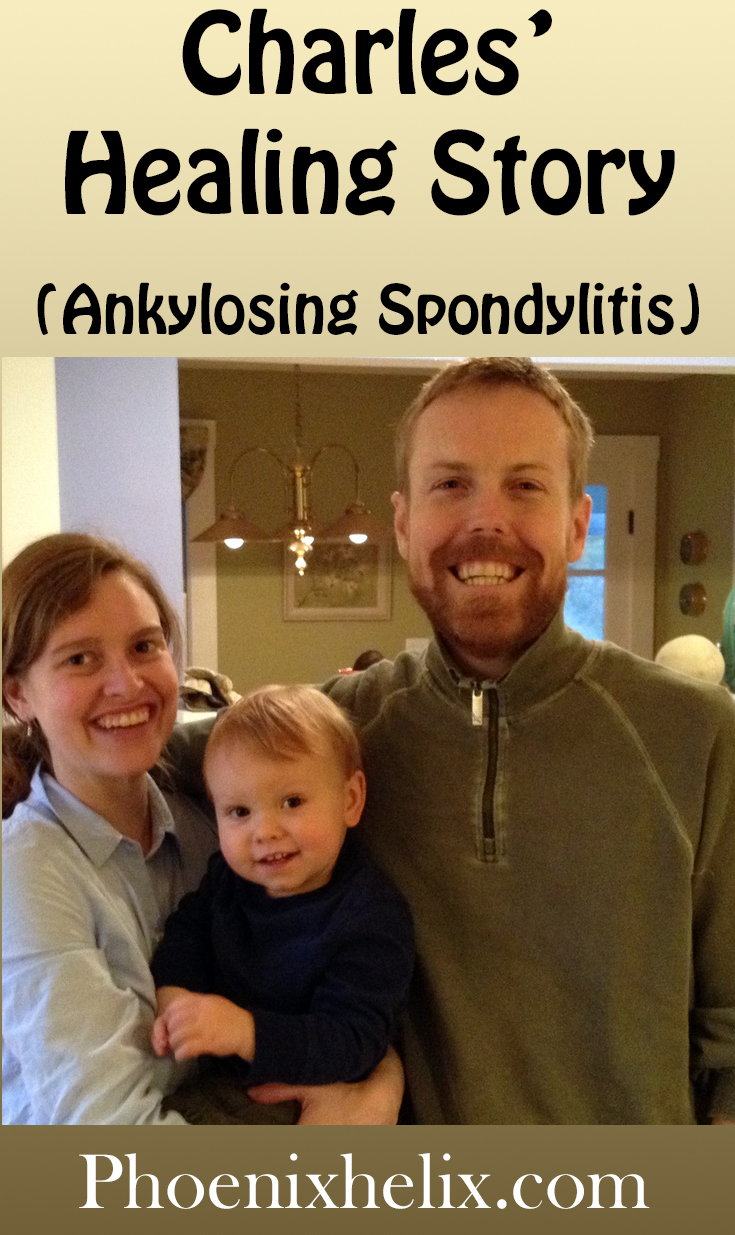
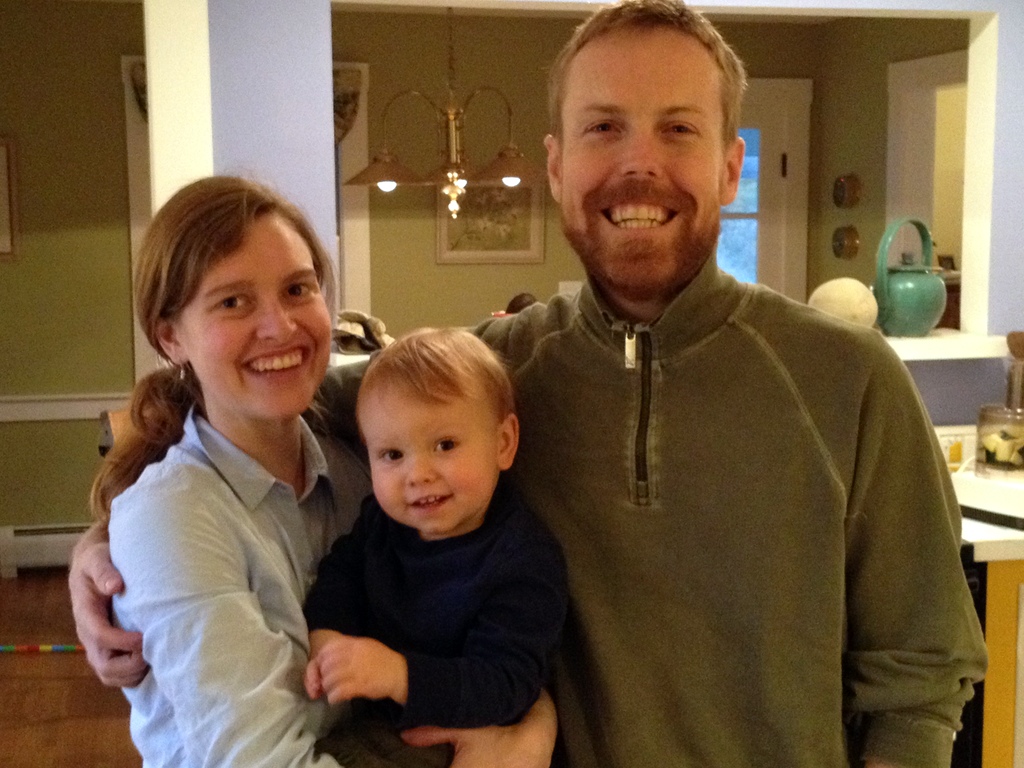
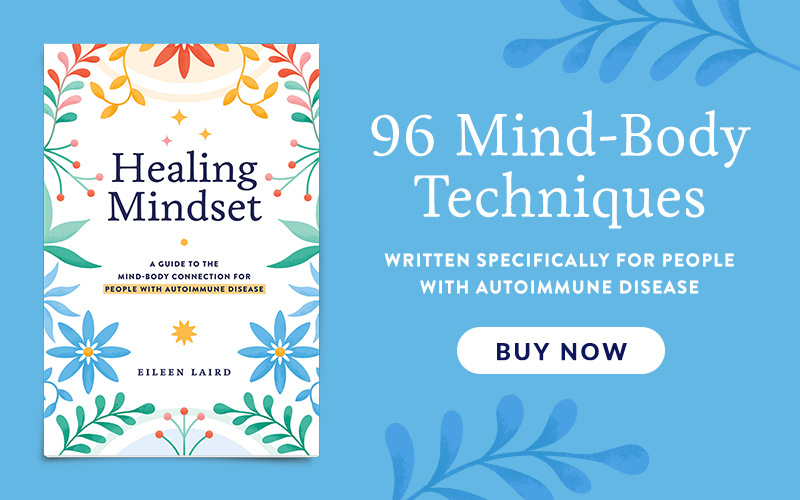
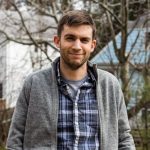

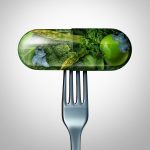
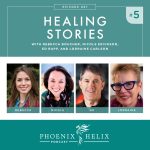
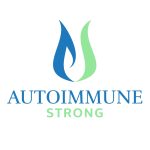
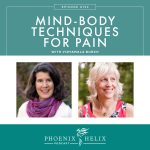
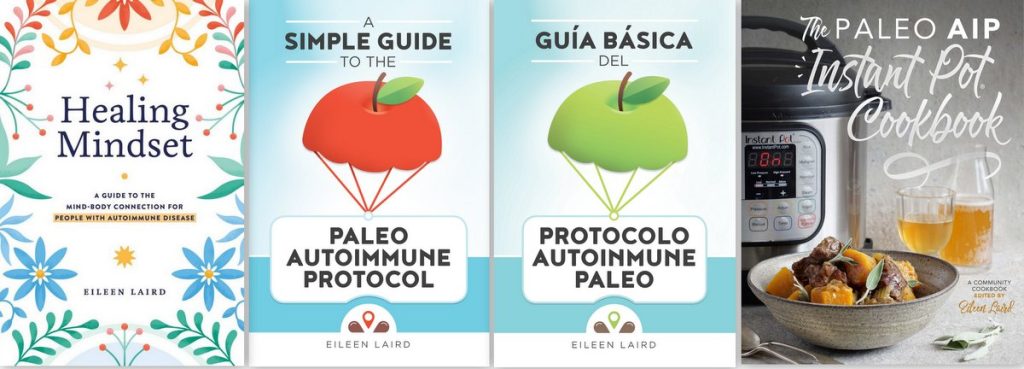
Thank you for sharing your story! Stories like yours are very encouraging. I’m so glad to hear that you’re doing well!
Can you please help me to understand your diet more? Are you just low starch and eat any low-starch foods? Or are you Paleo or AIP + low-starch?
Thank you!
Hi Stephanie. At the time of this interview, Charles was strictly no-starch, but in time he did transition to low-starch as his inflammation reduced and his body became less sensitive. To my knowledge, he never needed to do the AIP. Removing starch was enough to manage his symptoms.
I also have been diagnosed with AS and have found great results in using the AIP diet. However, I am curious, if we are not in any pain does that mean there is no “new” damage occurring? And if we are in some pain, due to a relapse – like Charles, usually out of convenience – how much damage are we causing then?
Hi Danielle. This is a great question, and it’s a complicated one. First, let me say that I’m not a doctor, but I’ll share with you what my doctor shared with me. It’s possible to be in remission (no autoimmune activity and no joint damage) but still have high levels of pain due to inflammation overall. One of the reasons healing diets can be so effective for pain relief is that they reduce inflammation. So, pain doesn’t always mean joint damage. That said, it’s also possible to be pain-free and still have low-grade autoimmune activity. The best way to monitor this is to work with your doctor and get regular scans. I interviewed Kari Owens in my Medication Decisions Podcast. She also has AS and the AIP made a huge difference in her pain relief and quality of life, but it didn’t stop the disease altogether, which she discovered through scans at her doctor’s office. So, she combines medication with the AIP (as needed) for optimal health. This doesn’t mean everyone needs medication. Charles doesn’t. But it’s wise to ask this question. Wishing you wellness in every way!
Thank you for sharing your story. Is this diet protocol specific to AS? I have RA and am in the beginning stage looking for as much insight as I can get, thank you.
Hi Holly. The No-Starch diet most commonly helps people with AS due to the specific HLA B27 gene – klebsiella bacteria combination that makes starch especially inflammatory. You can experiment with different levels of starch, though, and I wrote an article about that process that you can read here: https://www.phoenixhelix.com/2014/05/25/the-great-starch-experiment/
Since the HLA-B27/Klebsiella combination is responsible for inflammation, does this mean someone with AS who is negative for the gene may not benefit from a low-starch diet?
Stephanie, when it comes to a healing diet, it’s very personalized. It’s all about self-experimentation. While genes do play a role, there’s so much impacting inflammation beyond genes. The only way you’ll know if starch is an issue for you is to experiment with a low-starch diet yourself. It might help, and it might not. Here’s an article you might find helpful: The Great Starch Experiment.
Thank you Charles for sharing your story, as it is so inspiring! And thank you Eileen for sharing it on your site!
I have lived with AS for 16 years now, and the low starch paleo diet has been a life saver for me too. I do not even want to imagine my life without it! I was in bad shape when I finally got the AS diagnosis, and was dealing a very agressive case of this disease with spinal fusions and colitis. I now have five years of low starch (mostly no-starch) paleo eating under my belt so far, and love the variety I am able to come up with in my diet even with the exclusion of starches, grains, dairy and nightshades. It has been so empowering to be able to take control of my body and this disease through dietary changes.
Thanks so much Eileen for sharing a link to my new cookbook too! So appreciated!
Cheers!
Andrea Wyckoff
Andrea, your cookbook is so well-done! It’s going to help a lot of people. Thanks for sharing your healing story as well. It’s so inspiring to see more and more of us taking our health into our own hands.
I totally agree with that! 🙂 Take your health into your own hands. You won’t be disappointed!
Hi Eileen,
Yes I’m Dutch. My succes story is written in Dutch (forgot to mention that in my previous message 🙂 ) I’m so happy I found information about Ankylosing Spondylitis and diet (www.kickAS.org.) when I was in horrible pain at the time, because honestly: I wouldn’t know where I would be now without the diet. I’m so much better now!! Thank you for letting people like Charles spread the good news on your website! I’m trying to tell everybody here in holland about my story and help others where I can. Food is medicine! Love and hugs from Holland, Judith.
Wonderful! I recognize al lot: I’ve been diagnosed with Ankylosing Spondylitis a few years ago and I also eat starchfree since. This disease has everything to do with an overgrowth of the Klebsiella bacteria in our gut.
The diet has helped me to be almost painfree and I still get stronger every year. I would advice anyone with AS to try this diet because of my positive experiences with it. You can read my succes story on: http://almondfigtree.wordpress.com/
🙂 Judith
Thanks for adding your testimonial, Judith! Are you Dutch? I love that there are people around the world with these types of success stories.
Here’s another AS success story: http://anneangelone.com/journey-to-wellness/
Thanks for posting this. Charles Comey writes “the method of starving out the relevant gut flora by denying them their starchy substrate, etc.” Does he know “relevant gut flora” by name? After reading about American Gut Project I ordered a kit and received it and now I am recording my diet for 7 days, as suggested. I know that this science is really at it infancy, and I want to figure out the gut microbes that is responsible for salicylate, I assume they are missing in people who are intolerant to saclicylate. I stopped eating starch (except rice, as per Perfect Health Diet). Maybe if these microbes feeding on starch die off, good microbes will take over? Is there a list of these gut microbes organized by their functionality?
Hi Zeynel, there isn’t such a list. In the future, hopefully there will be. Also keep in mind that Charles’ story isn’t universal. Some people do better with starch, while others do better without. That’s where self-experimentation comes in.
I am so happy for Charlie! I can really relate to his experience, as I have psoriatic spondylitis – a closely related autoimmune disease. I was also in constant, debilitating pain, and a partial-AIP diet has improved my condition a lot. Unfortunately, I have permanently damaged joints from my disease – so I encourage folks with autoimmune diseases to give a healing diet a serious trial as early as possible! Thanks so much for your wonderful site, Eileen!
Thanks for sharing your wisdom, Debra.
I LOVE that you quoted Robert Holden! 🙂 Thank you for this beautiful and inspiring story and for sharing it with us at Healing With Food Friday! Please come back again tomorrow! 🙂
I love that you know who Robert Holden is! Thanks for featuring Charles’ Story.
Amazing, it’s always wonderful to hear that someone has been able to find a way to manage pain. Thanks to both of you for sharing this story, I’ve pinned it 🙂
Hey Eileen,
I love that Charlie’s story is making news on your site. Thank you! It’s always great to see another voice making waves about the power of using diet as medicine. Keep up the good work!
Charlie- thanks for your continued efforts and congrats on your success!
Bob Connors
http://www.sickopportunity.com
This is wonderful. I am sharing on my FB page today and also pinning.
Thanks, Jennifer.